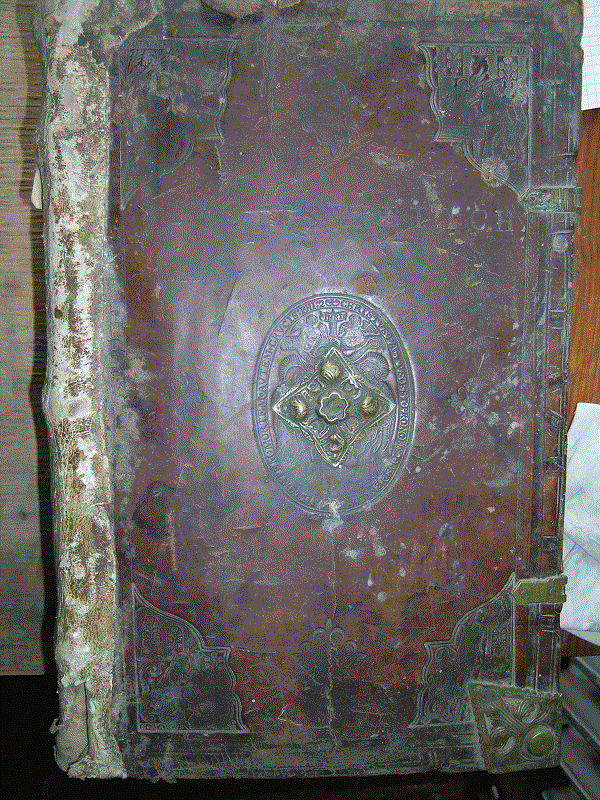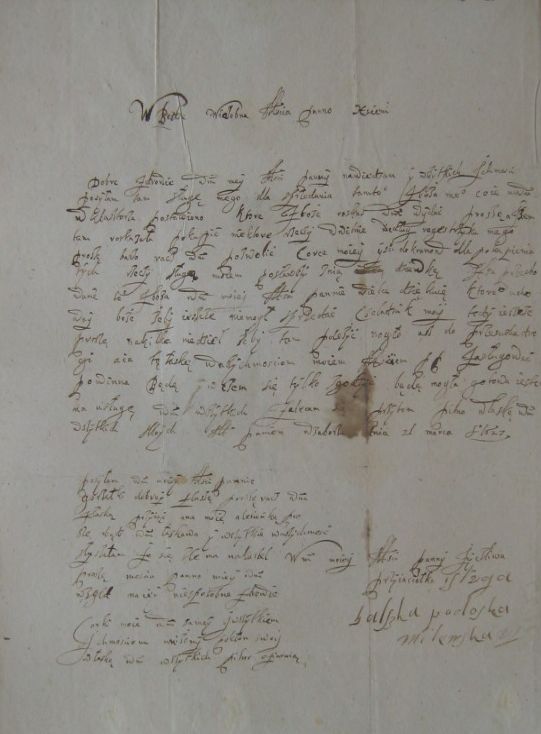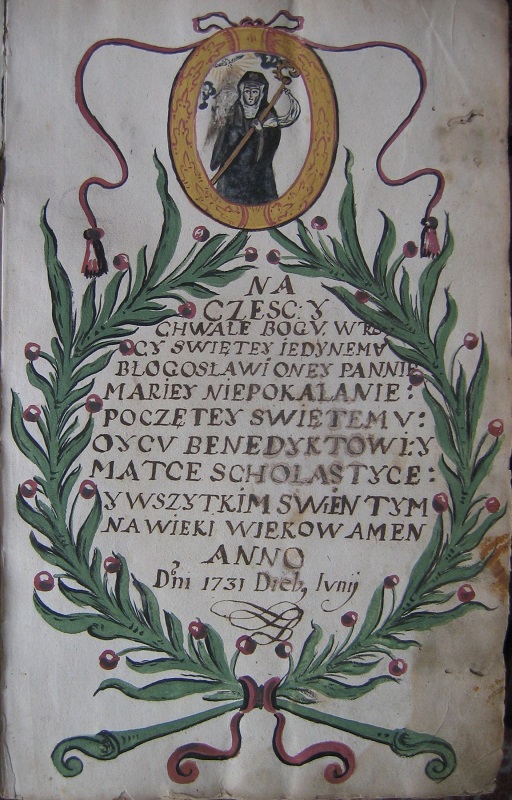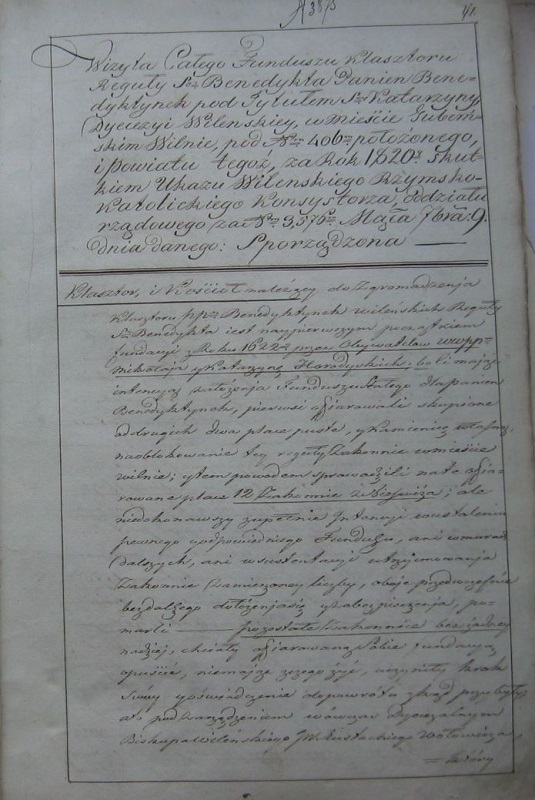RESEARCH EXCELLENCE INITIATIVE
FREEDOM OF RESEARCH – SCIENCE FOR THE FUTURE
“Freedom of research – science for the future” series consists of
articles, interviews and short videos presenting research
conducted by the winners of “Freedom of research”
Jolanta Gwioździk PhD, DLitt, Associate Professor
History of the Benedictine Sisters from Vilnius
| Katarzyna Stołpiec |
“Listen, my son, to your master’s precepts, and incline [to them] the ear of your heart […]To you, therefore, my words are now addressed, whoever you may be, who are renouncing your own will to do battle under the Lord Christ, the true King, and are taking up the strong, bright weapons of obedience.”
These words begin the introductory prologue to the “Rule” of St. Benedict. Although the text was written around the year 540, it still inspires members of monastic communities and many scholars to this day. One of the researchers who explores the phenomenon of the “Rule” by Benedict of Norcia (480–547) and the history of the monastic women of the Benedictine community is Jolanta Gwioździk PhD, DLitt, Associate Professor of the University of Silesia from the Institute of Culture Sciences of the University of Silesia in Katowice, winner of the competition entitled “Freedom to Research” under the Research Excellence Initiative.

The main topic of interest of Prof. J. Gwioździk is a Benedictine order that was first reformed in Poland after the Council of Trent (1545–1563). The resolutions of the Magisterium led to the renewal of religious life, then the so-called Chełmno congregation was created which connected 22 Benedictine monasteries located throughout the then Republic of Poland.
“The spirituality, intellectual culture of this order, as well as the principles of everyday life are special areas that attract my attention. The daily rhythm, extremely organised in accordance with the cycle of the liturgical year and canonical hours, allocated a certain amount of time to sleep, work and prayer. This monastic character is aptly summarised in the sentence ora et labora, which, although it does not belong to the words of the “Rule”, is in a way the motto of the Benedictine charisma expressed with the exhortation: May God be glorified in everything!” describes the scientist.
After the Council of Trent, the Polish Benedictine Sisters initiated many changes. They included, among others translations of formative and theological literature in the field of ascetic and mysticism. The motive for taking these actions was the conviction that God should be praised not only with the mouth, but also with the heart, and in order to achieve this, it was necessary to understand the recited content. The researcher says that some of them had to be mastered by memory (such as a rule and a constitution) Reading (collective and individual) was considered the best and most appropriate activity for a monk, hence the “Rule” strictly delineated specific places (choir, refectory, chapter house, cell) and the time that had to be devoted to daily reading. The sisters, in the spirit of fulfilling the dictates of the “Rule”, developed a collection of texts that served the development of the spiritual life.

Binding from the 17th century of “Lives of the Saints” (in the collection of the Benedictine Sisters’ Abbey in Vilnius, now in Żarnowiec) | Photo by Prof. Jolanta Gwioździk

Private correspondence (in the collection of the Benedictine Sisters’ Abbey in Vilnius, now in Żarnowiec) | Photo by Prof. Jolanta Gwioździk
Prof. J. Gwioździk explains that the nuns very often reached for the pen themselves and created their own texts that revealed their thoughts, perception of the world and relationship to God. Thanks to this, many unique considerations, meditations, autobiographies and biographies were created, which today constitute a valuable relic in the field of the history of spirituality. – Equally interesting was melic poetry, as well as religious historiography. At the same time, convents inspired the creation, translation into Polish and preservation of various messages, initiated and paid for the printing of books, took care of their internal, monastic and external circulation – says the researcher.
The prints initially served the community in which they were created. Over time, they began to be exchanged between monastic convents. Later, they were made available to the Old Polish society to spread the spirit of piety among them.
Research conducted by Prof. J. Gwioździk classified religious texts printed in monasteries into several groups. The first were of formative and legal nature. They were created and distributed in monasteries, intended for the internal use of the community. The second, which included translations into Polish, were written for the needs of nuns. They also included the works of the then representatives of the most important schools of spirituality, the publishing of which was initiated by the sisters. The following were supplemented with occasional texts, sermons depicting customs, holidays, anniversaries, jubilees, as well as other works documenting religious events.
Prof. J. Gwioździk uses the knowledge gained about the convents of Benedictine nuns, especially in the eastern territories of the former Polish-Lithuanian Commonwealth, to conduct archival searches. – I have already received many valuable monastic manuscripts, including liturgical ones, I have researched extremely interesting correspondence (internal and external, with the church and secular authorities, including kings and bishops), inventory books and chronicles, as well as hundreds of old prints, often beautifully presented with original bindings, often with proprietary notations, prayers, meditations or other. Thanks to these specimens, today we are able to get to know the former monastic life. My goal is to reconstruct historical book collections scattered in various archives and libraries in Europe. I find their fragments and recreate them, restoring them “as a whole”. In this way, I was able to catalogue and describe, among others book collection of Benedictine nuns from Lviv.

Metric of the Benedictine Sisters in Minsk (in the collection of the Benedictine Sisters’ Abbey in Vilnius, now in Żarnowiec) | Photo by Prof. Jolanta Gwioździk

Inspection files of the Vilnius monastery Minsk (in the collection of the Benedictine Sisters’ Abbey in Vilnius, now in Żarnowiec) | Photo by Prof. Jolanta Gwioździk
During the repatriation, the nuns left the monasteries inhabited for centuries, which was also done by the Benedictine Sisters from Vilnius, who ended up in Żarnowiec (they took over the abandoned abbey there). They took some of the archives and books with them, but as it turned out, some prints were walled up in the walls of the monastery church of St. Catherine in Vilnius. During the renovation of the temple, a hidden collection was found, which was transferred to the Vilnius library. Prof. J. Gwioździk reconstructs this resource, incl. on the basis of inspection files preserved in Vilnius, Minsk and St. Petersburg. The Vilnius monastery was an important centre of not only religious but also intellectual activity, especially in the field of editorial activity: the local nuns published about 40 texts, most of them in the Chełmno congregation. They especially took care of religious formation, training of novices, as well as monastic spirituality.
“When I hold such manuscripts and books in my hands, I am aware of the individual history that is associated with each text: written, copied, sometimes translated and repeatedly read by women who in this way, year after year, age after age, passed on their experience of life in Benedictine community,” sums up Prof. J. Gwioździk.





